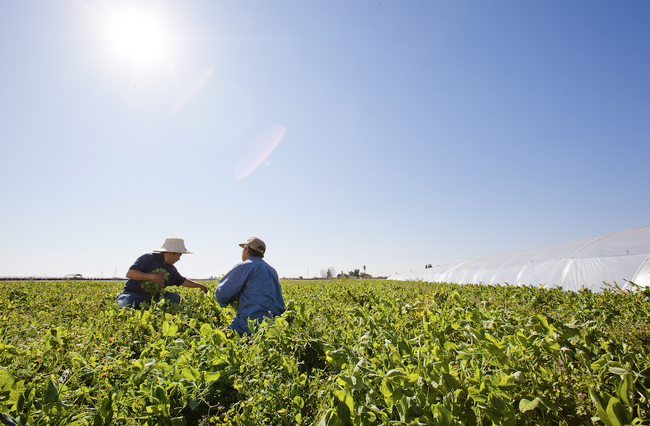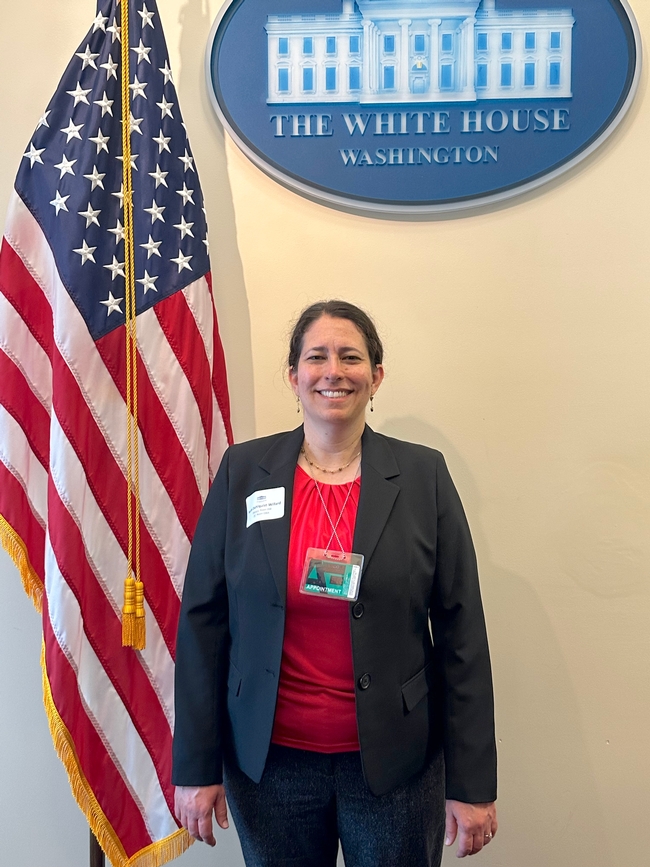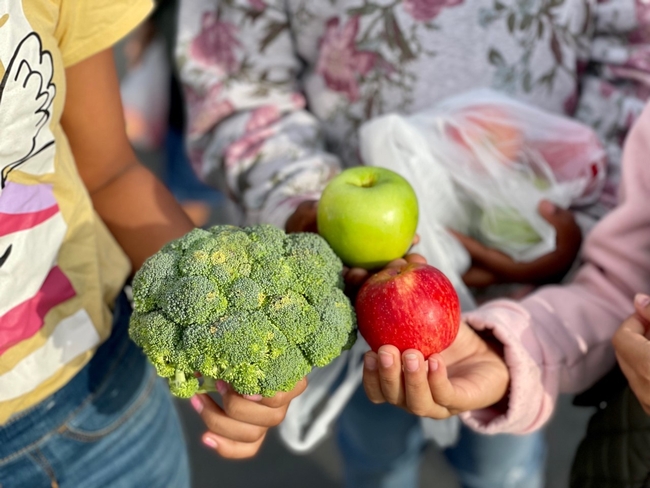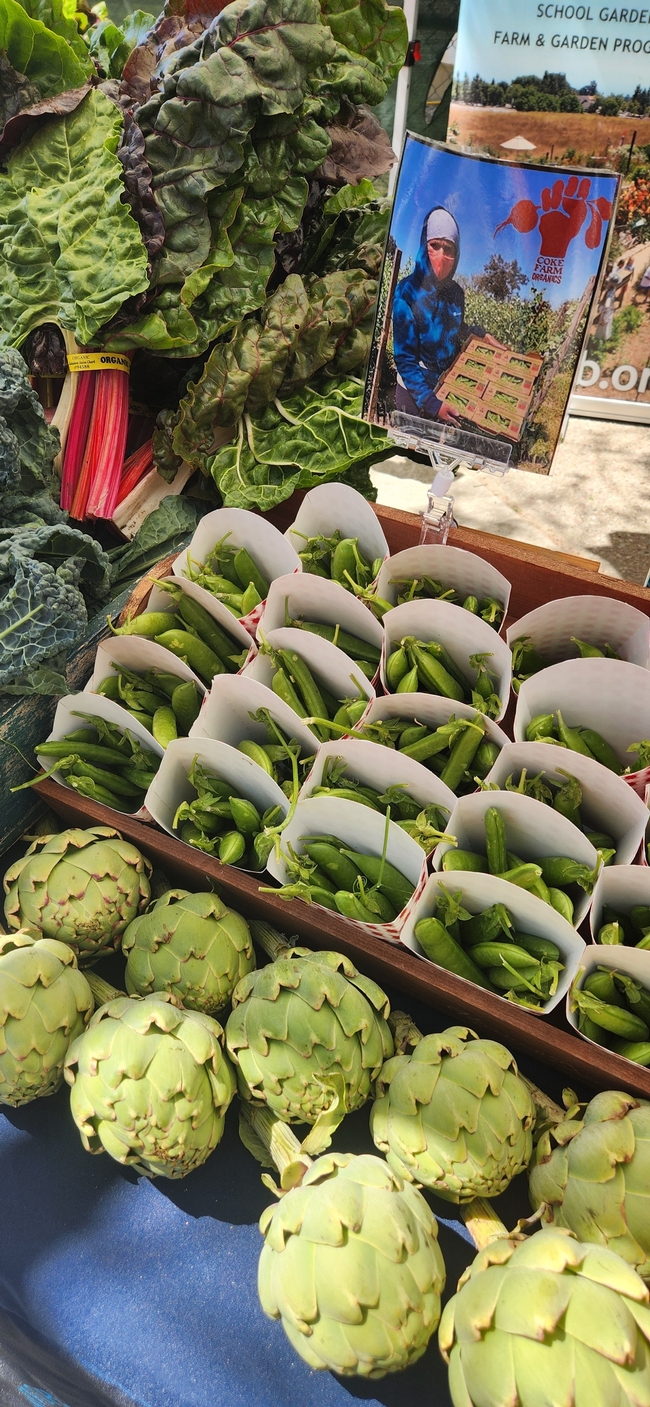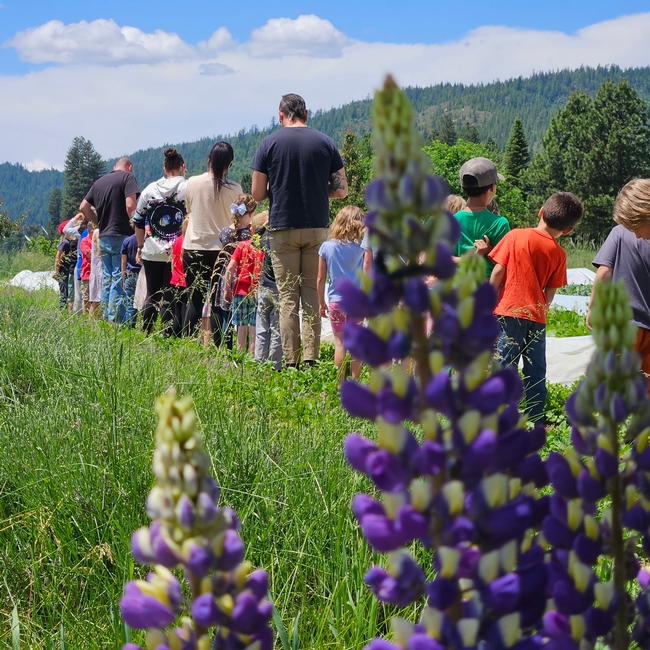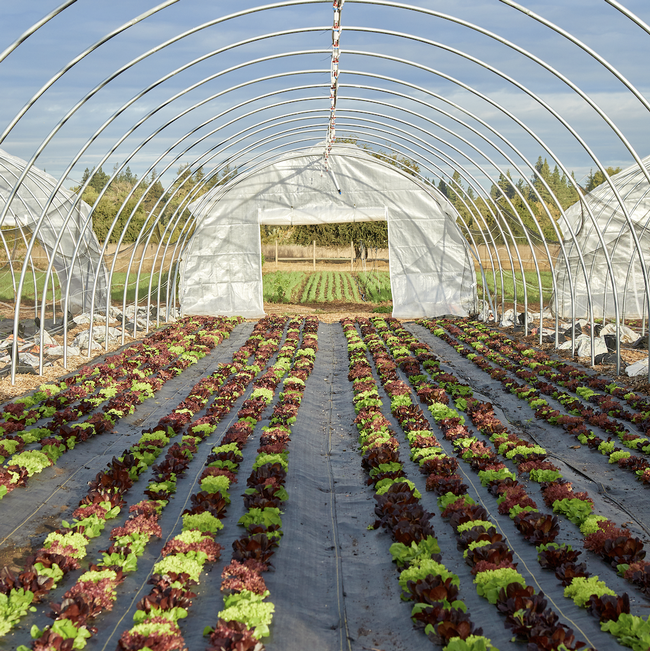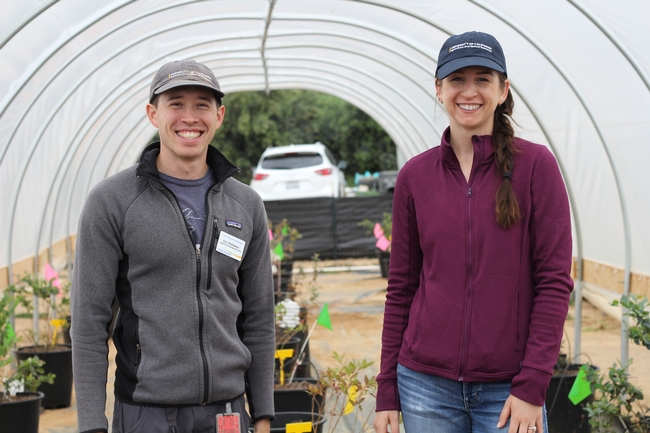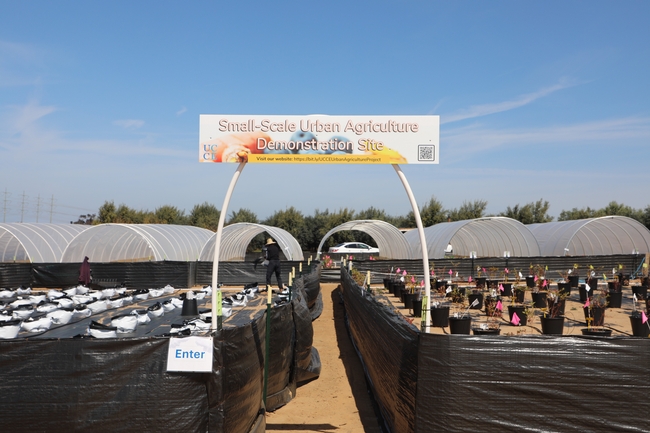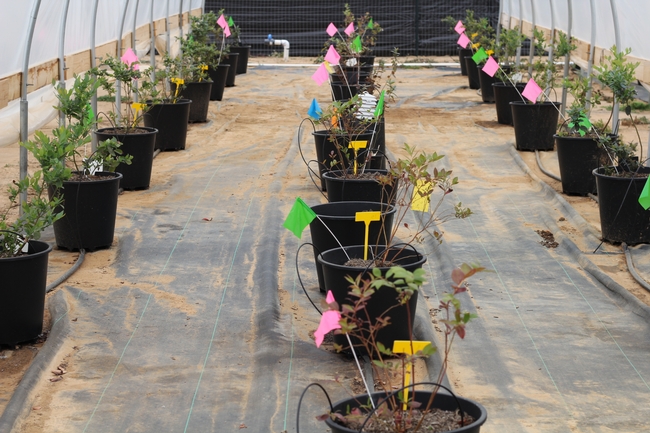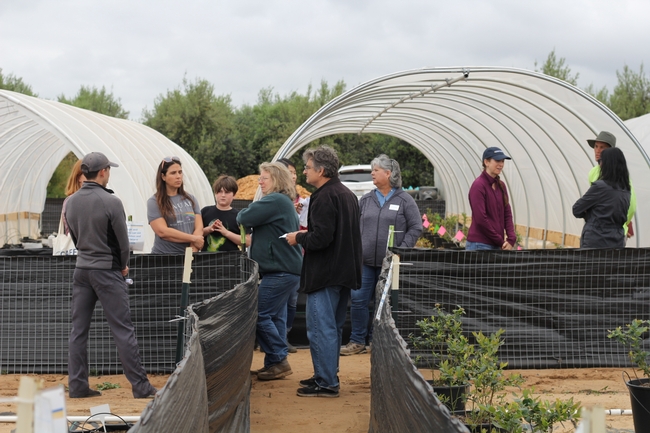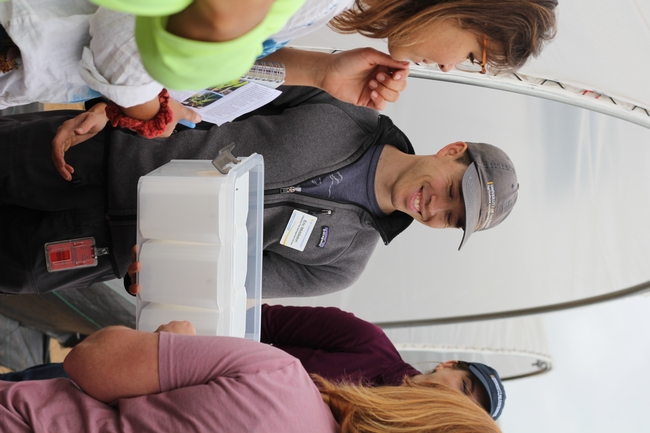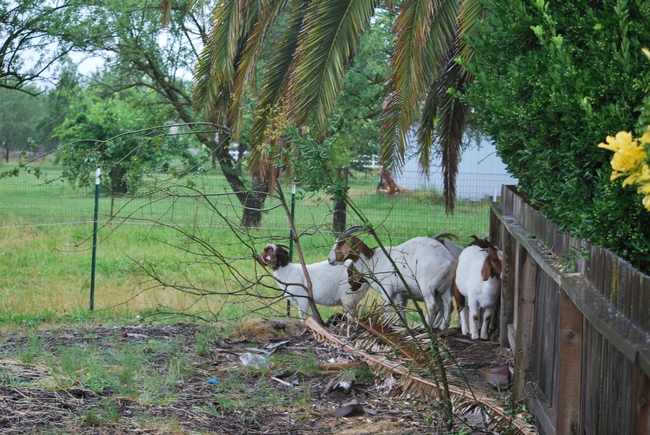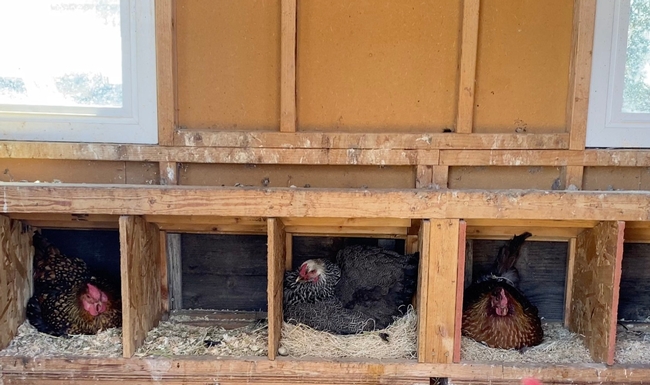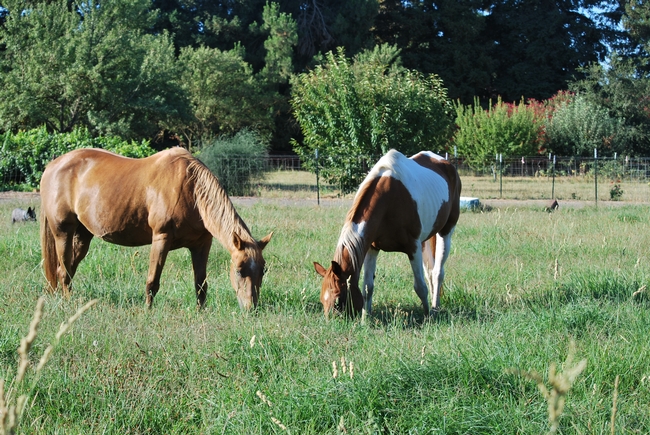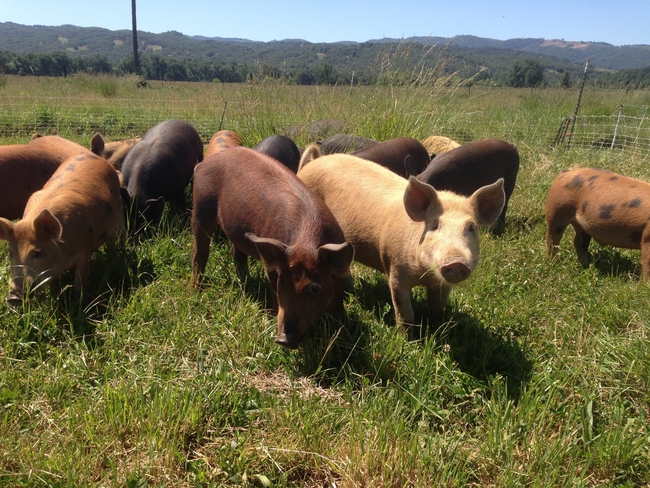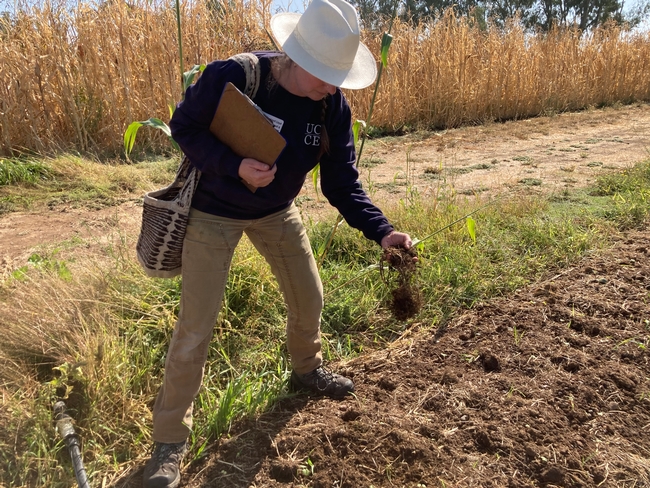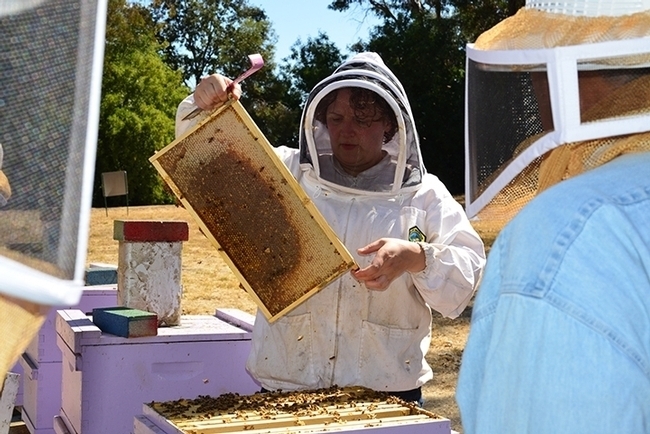Posts Tagged: small
White House Summit explores impact of extreme heat, ways to adapt
UC ANR Small Farms Network supports small-scale and underserved farmers impacted by extreme heat
Ruth Dahlquist-Willard, interim director for the UC Sustainable Agriculture Research and Education Program, joined more than 100 participants from across the country at the first-ever White House Summit on Extreme Heat. Community representatives and practitioners met with federal agency representatives and Biden Administration officials to discuss successful locally tailored, community-driven practices to adapt to extreme heat as well as available federal resources.
According to the National Oceanic and Atmospheric Administration or NOAA, summer 2024 was California's warmest summer on record. As California's climate is changing, episodes of extreme heat are becoming more common, leading to substantial health, economic and ecosystem impacts.
In the agricultural sector, extreme heat events can cause heat illness in farmworkers, crop losses and changes in pest pressure. California crop losses due to drought, wildfire and heat were estimated at $239 million in 2023.
Disaster relief funds are available to help growers recover from lost production due to extreme heat. Since 2021, the UC ANR Small Farms Network has connected small-scale farmers with over $5.8 million in direct-to-producer relief funds for losses related to drought, flooding and other extreme weather events.
To further support small-scale farmers in adapting to the changing climate, Dahlquist-Willard and the Small Farms Network are evaluating how the extreme heat of summer 2024 impacted farmers. Farmers reported anecdotal observations that included:
- Shifting work hours to cooler parts of the day
- Closing farm stands and farmers markets due to extreme heat
- Crops ripening more quickly than expected, impacting harvesting and packing schedules
- Poor fruit set due to extremely high temperatures
The team is working to determine what damage symptoms on small-acreage California specialty crops can be attributed to extreme heat based on scientific literature and assessments from UC ANR colleagues. Understanding the impact of extreme heat on the farming community can help inform research and policy, ultimately equipping farmers with strategies to adapt to extreme heat events.
“It was inspiring to meet with leaders from around the nation who are working to support communities impacted by extreme heat and learn about the creative solutions they are implementing,” said Dahlquist-Willard. “The challenges faced by these communities make it all the more important to continue to work against climate change by reducing greenhouse gas emissions, as well as to develop new methods and resources to mitigate the effects of extreme heat and other climate impacts.”
The Extreme Heat Summit highlighted the Biden-Harris Administration's investments in climate reliance and put forth an Extreme Heat Call to Action calling upon public and private sectors to prepare for future extreme heat events. Communities and governments interested in participating are asked to use all available tools to protect people from extreme heat. Approaches and tools which could be used to protect people and resources from extreme heat are highlighted in the U.S. Climate Resilience Toolkit and the National Heat Strategy. Submissions for the Call to Action will be accepted through Nov. 1, 2024.
Further reading:
Heat Illness Prevention, UC Davis Western Center for Agricultural Health and Safety
Pathak et al., 2018. Climate Change Trends and Impacts on California Agriculture: A Detailed Review
UC's New Climate Action Goals: Frequently Asked Questions
Investments in farm-to-school program stabilize farms, expand climate-friendly farming practices
Small and midsize farms, women and BIPOC farmers especially benefit
A new report reveals that California farmers participating in the state's Farm to School Incubator Grant Program are increasing sales of fresh, local and organic produce, meat and dairy products to schools, according to researchers evaluating program impacts. The report found that 57% of the program's farmers made sales to schools between April and September 2023, representing an average of 33% of their total farm revenues. All food producers funded by the Farm to School Grant Program state that they use or plan to use climate-smart agricultural practices in their operations during the grant period.
While existing research shows that kids who engage with farm-to-school programs eat more fruits and vegetables, are more willing to try healthy foods, and even perform better in class, the California farm-to-school evaluation project examines a gap that most farm-to-school research hasn't addressed: how local purchases from schools affect the agricultural sector and the environment.
The report found that the investments are flowing primarily to the farmers the state seeks to support through this program: Of the 50 producer grantees evaluated in this report, 42% are owned by people who identify as Black, Indigenous and People of Color, and 62% are owned by women. Nearly all (94%) are small to midsize operations.
Three producer grantees revealed that the Farm to School Incubator Grant Program funding likely prevented them from going out of business. “This grant … has and will enable us to do things on the farm that would probably take us a decade to do but we'll be able to do that in one or two seasons. So [it] really moves us forward a lot,” noted one farmer.
Beth Katz, a lead researcher and executive director of Food Insight Group, said, “Farmers are expanding their relationships with local school districts, increasing their sales to schools, investing in infrastructure and staff, and forming new relationships with food hubs that can help them with the often complex purchasing requirements unique to school food. While we're still at a very early stage of understanding the impacts of these investments, we're beginning to see patterns emerge.”
A Humboldt County farmer noted that food hubs, which are also supported by the grant program, are critical to their success in accessing the school food market: “[The food hub] is really a huge game changer to be able to make that one drop in town, even though it's an hour away, rather than going to [several school sites] and just making all these little drops. That's been one of the ways that it's very . . .appealing to us as a farm to participate.”
The report also examines the potential for environmental impacts through direct investments in farmers who use climate-friendly farming practices.
“I'm inspired by the potential for the farm-to-school program to support farmers using environmentally beneficial practices like reducing pesticides, planting cover crops and growing organic — and to help farmers expand or adopt these practices. It's essential these farmers have a market for what they grow to see durable environmental benefits,” said Tim Bowles, who is leading the environmental impacts assessment for the evaluation team and is an assistant professor in the Department of Environmental Science, Policy & Management at UC Berkeley and lead faculty director of the Berkeley Food Institute.
“We're also seeing farms actually expand their acreage in order to sell to schools, suggesting this is a desirable market. We're investigating the environmental impacts from these investments, especially for climate,” Bowles said.
As with many new programs aimed at building out long-delayed infrastructure, school food systems improvement demands a deep-rooted approach.
“The challenges around changing a complex school food system are substantial,” Gail Feenstra, a pioneer in farm-to-school research and co-lead on the project from UC ANR stated. “Decades of research shows the value to children from fresh, locally sourced food. However, what is becoming more clear from this research is that long-term investments in the full farm to school system are crucial. Without regional-level infrastructure, staffing, aggregation and distribution in place to support getting that locally grown food from farms to the schools and kids, we'll have challenges moving the needle.
"Fortunately, the state's strategic and innovative investments in the entire farm to school supply chain – meaning funding for school districts, farmers and also their regional partners, combined with support from CDFA's regional staff – are beginning to address those long-standing challenges.”
Could empty lots be growing food, economic opportunity?
UCCE scientists study feasibility of specialty crops for small urban growers
The vacant lots around your neighborhood could be growing fruits and vegetables and making local produce more accessible – while reducing energy needed to transport and distribute the food. Could turning those empty lots into small farms also become opportunities for economic development?
To answer this question, a team of researchers from University of California Cooperative Extension in San Diego County are investigating the economic feasibility of growing high-value specialty crops in urban settings like vacant lots. The project – led by Eric Middleton, UCCE integrated pest management advisor for San Diego, Orange and Los Angeles counties – is currently in progress at The Flower Fields in Carlsbad, a seasonal attraction for locals and tourists.
Tucked away in the back of the field is the Small-Scale Urban Ag Demonstration Site where Middleton and his team established a small farm on approximately 17,000 square feet, starting fall 2023. Funded by the U.S. Department of Agriculture National Institute of Food and Agriculture, the farm is designed to evaluate containerized production both outdoors and under high tunnels.
Growers don't necessarily need land, just space
High tunnels, also referred to as hoop houses, are semi-permanent structures that act similarly to greenhouses in providing a controlled environment. For the experiment, Middleton will compare cost, effort and durability of two types of high tunnels: one made of steel and the other out of PVC pipes.
“We want to give interested growers information on as many options as we can,” said Middleton, who explained that the project is motivated by the challenges of urban settings, including limited space and lack of arable land.
In the trial, they are growing turmeric, ginger and blueberries. The high-value crops were selected because of their potential to earn a profit. Data evaluating plant variety, soil mix, fertilizer, growth performance, yield and pest and disease pressures will be collected and reported when the project concludes in 2026.
As the crops develop in containers – blueberries in pots and turmeric and ginger in grow bags – Middleton pointed out the mobility aspect of the study, noting that growers don't necessarily need land, just space.
Whether it's a backyard or a rooftop, containerized production means easier transport, especially since vacant land doesn't always remain vacant forever and urban lots may often need soil remediation. Growing in containers solves the anticipated problem of having to relocate.
Where to set up shop in San Diego County
Jan Gonzales, project coordinator and community education supervisor for UCCE San Diego County, is leading the effort to identify available urban land in San Diego County as well as the policies and procedures for growers to access these spaces.
Gonzales is collaborating with community members who are working on similar projects to identify space for prospective growers.
“This has been done before for different objectives and for specific areas in the region, but the information was either project-specific and not publicly available, or not easy to find,” Gonzales said.
Having spoken with people associated with previous or ongoing agricultural land mapping projects, Gonzales has agreed to coordinate and facilitate an advisory work group to discuss areas of potential collaboration and develop project efficiencies. She anticipates holding the first group meeting before the end of the summer.
A production guide to help community members re-create the project
The ideal audience for a study like this is anyone who wants to grow specialty crops, according to Lindsey Pedroncelli, interim director of UC South Coast Research and Extension Center in Irvine, who worked on the project alongside Middleton when she was a staff research associate with UCCE San Diego.
“If you're a new grower or a grower who wants to diversify your crop production, what we're learning here can be applied to you,” said Pedroncelli.
Pedroncelli has been instrumental in bringing the experiment to life and documenting its step-by-step workflow thus far. The production guide, which is being created as the study unfolds, will include instructions detailing how to replicate the experiment from the ground up. Currently, it contains information on how to design your farm, the materials to buy, building structures, irrigation setup and crop management.
The most intriguing open question, whether the operation is profitable, is the driving force behind the production guide and will certainly be addressed, Pedroncelli said.
Book a tour and visit the farm
When visiting the farm, you'll encounter three varieties of blueberries: Star, Snowchaser and Misty. Snowchaser has been a top producer since it was planted in January, but the variety is known to be an early season producer.
Using only one variety of each, the turmeric and ginger were planted in late March-early April. With some unanticipated cold weather in San Diego County, both crops struggled when transitioning out of dormancy, leading to very slow progress, which the team is still navigating today.
Visually, Middleton and his team have noticed differences between the crops growing under the high tunnels versus those grown outdoors, although the data has not been analyzed to confirm or explain notable differences.
Attempting to demonstrate how to profitably grow high-value crops in urban settings using limited space and resources, Pedroncelli said she hopes this study will also encourage people to grow culturally significant crops for their communities.
To tour the Small-Scale Urban Ag Demonstration Site at The Flower Fields in Carlsbad, email Eric Middleton at egmiddleton@ucanr.edu with "Urban Agriculture Demonstration Site Tour" in the subject line.
To learn more about the project and its progress, visit https://ucanr.edu/sites/socalIPM/Small_Scale_Urban_Agriculture_Project_/.
Tips on care of backyard chickens, sheep, goats compiled on new website
UC Cooperative Extension expertise available in English and Spanish on small-scale livestock production, pasture management, pests and predators, weed management and emergency preparedness
A team of University of California Agriculture and Natural Resources advisors has created a new comprehensive website for small acreage landowners in California and beyond. The Small Acreage Landowners website, at https://ucanr.edu/sites/smacreage, is designed to be a one-stop shop for backyard livestock producers, youth raising livestock, and other small acreage landowners. Information on livestock husbandry, pasture management, pests and predators, weed management and emergency preparedness is in English and Spanish on the website.
“We've seen an amazing growth in interest in small-scale livestock production throughout California in the last four years,” said project leader Julie Finzel, UC Cooperative Extension livestock and natural resources advisor for Kern, Tulare and Kings Counties. “Folks in our communities are hungry for knowledge about how to care for their land and their animals – from urban chickens to backyard goats and sheep.”
The website includes specific information for most common livestock species, as well as links to sites with more in-depth information about specific topics. Other pages include information on protecting livestock and property from pests and predators, controlling common weeds and protecting water quality.
The site also provides links to a variety of other UC ANR resources, including wildfire information from the Fire Network, and videos and webinars from the UC ANR Managing Land & Livestock on Small Acreage Webinar Series.
“We're excited this new website will make science-based information available to a wider audience,” said Finzel. “Most of our educational programming has focused on commercial livestock production.”
In addition to Finzel, a team of UC Cooperative Extension livestock advisors contributed to the project, including Theresa Becchetti (Stanislaus and San Joaquin counties), Brooke Latack (Imperial, Riverside and San Bernadino counties) Dan Macon (Placer, Nevada, Sutter and Yuba counties), Devii Rao (San Benito, Santa Cruz and Monterey counties), Rebecca Ozeran, former UC Cooperative Extension livestock advisor for Fresno and Madera counties and Flavie Audoin, former UCCE advisor for the Central Sierra now rangeland management extension specialist at University of Arizona. UC ANR technician Sequoia Williams in Placer County compiled information and designed the webpages.
The Small Acreage Landowners website was created in part with funds from a USDA-NIFA Renewable Resources Extension Act grant.
Updated March 6, 2024, to add Flavie Audoin as a contributor to the website.
UC offers resources for urban farmers at EcoFarm
University of California scientists will be participating in the 44th Annual EcoFarm Conference Jan. 17-20 in Pacific Grove. EcoFarm participants gather to celebrate and learn about advances in farming and food systems throughout the state. This year, the three-day conference will highlight Black, Indigenous and People of Color communities that depend on agriculture, while also showcasing the new technological advances that further the development of agriculture.
Researchers from the UC Davis Veterinary Teaching Hospital's Department of Population Health, the Western Institute of Food Safety and Security and UC Agriculture and Natural Resources will be attending the conference to highlight the importance of food safety and technical skills in urban farming.
At EcoFarm, the Western Institute of Food Safety and Security will showcase its Civic Urban Farmer Program with an exhibit. The program, led by UC Davis assistant project scientist Sara Garcia and supported by UC Cooperative Extension, strives to uplift BIPOC communities.
The Civic Urban Farmer Program
The Civic Urban Farmer Program – a no-cost, 11-week program for farmers in the Sacramento region and Bay Area – provides technical support for new and upcoming urban farmers through webinars and in-person events. The program is available for any race, gender, age and skill ability, and seeks to provide safe, expert advice for farmers at any scale.
Soil health, composting, pest management, business marketing, food safety and urban policy are among the topics covered in its lecture-style classes.
Earlier this year, the program graduated its second cohort, with the support of two nonprofit organizations, Three Sisters Gardens in West Sacramento and Common Vision in Oakland. The program is supported by industry professionals, researchers and government officials, as well as local nonprofit and non-governmental organizations.
Elina Niño, UC Cooperative Extension specialist in apiculture, joined the Civic Urban Farmer Program to support urban farmers with training on managing pollinators to increase crop yields and create value-added products such as honey. The success of the pollinator program revealed that small urban farmers desire resources and education that are tailored specifically toward the cultivation of healthy and safe food.
For more information about the Civic Urban Farmer Program, visit https://www.wifss.ucdavis.edu/urbanfarmers.
Organic Agriculture Institute
The UC Organic Agriculture Institute, led by UC Cooperative Extension specialist Houston Wilson, will have an exhibit at EcoFarm. UC Organic Agriculture Institute brings together growers, certifiers, consultants, community groups and other stakeholders with UC research and extension personnel to share information about organic farming.
For more information about the UC Organic Agriculture Institute, visit https://organic.ucanr.edu.
Workshop speakers
Several UC Cooperative Extension advisors will be speaking at EcoFarm, including Richard Smith, UCCE emeritus vegetable crops advisor; Patricia Lazicki, UCCE vegetable crops advisor; and Margaret Lloyd, UCCE small farms advisor.
Connect with @ucanr on X, Instagram and LinkedIn.

